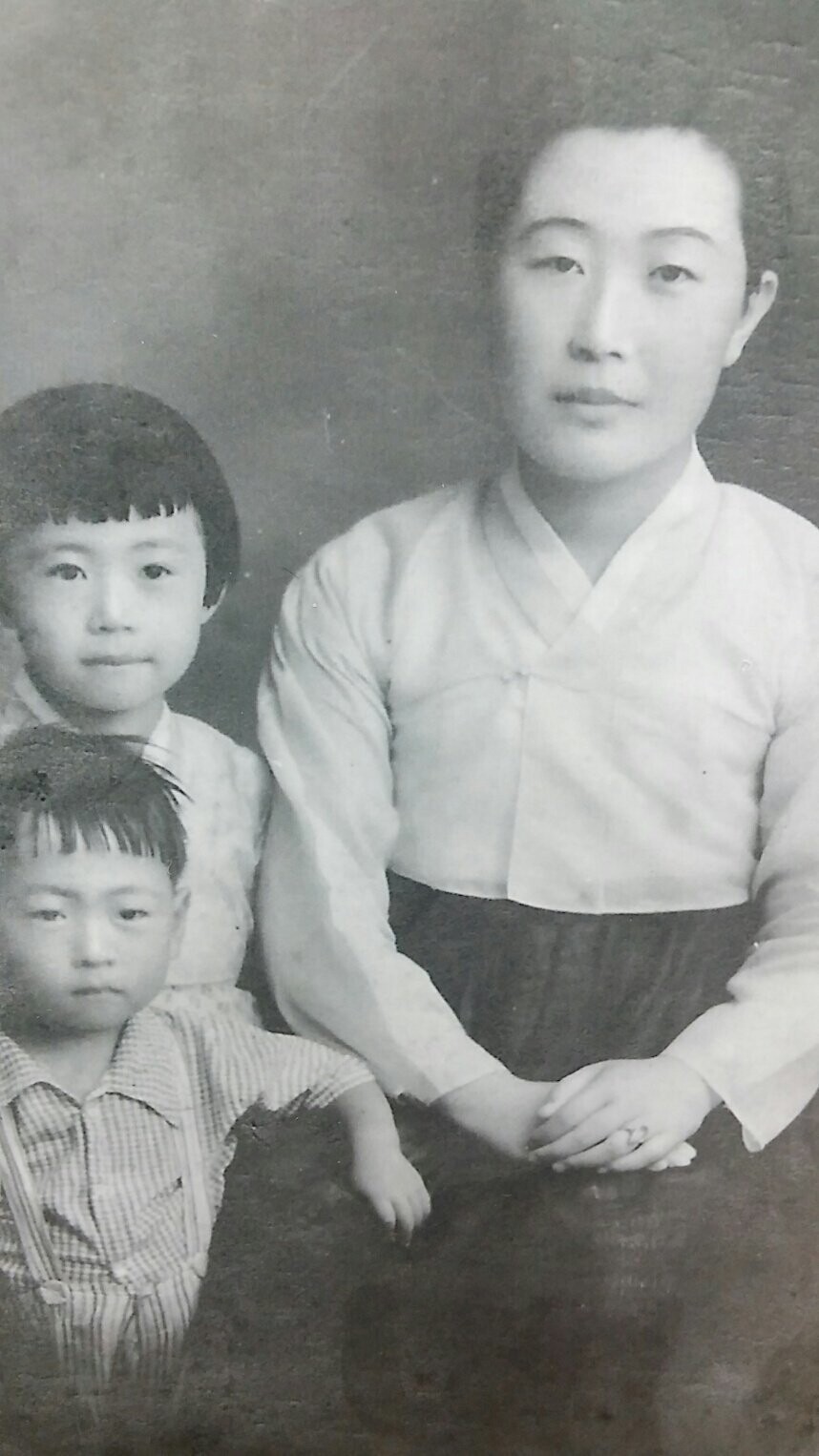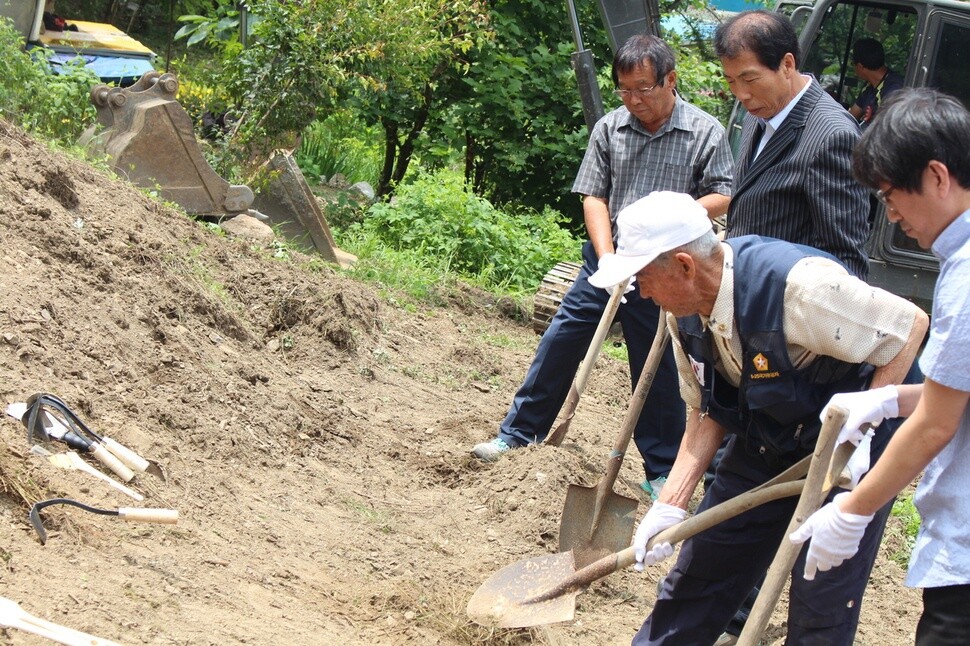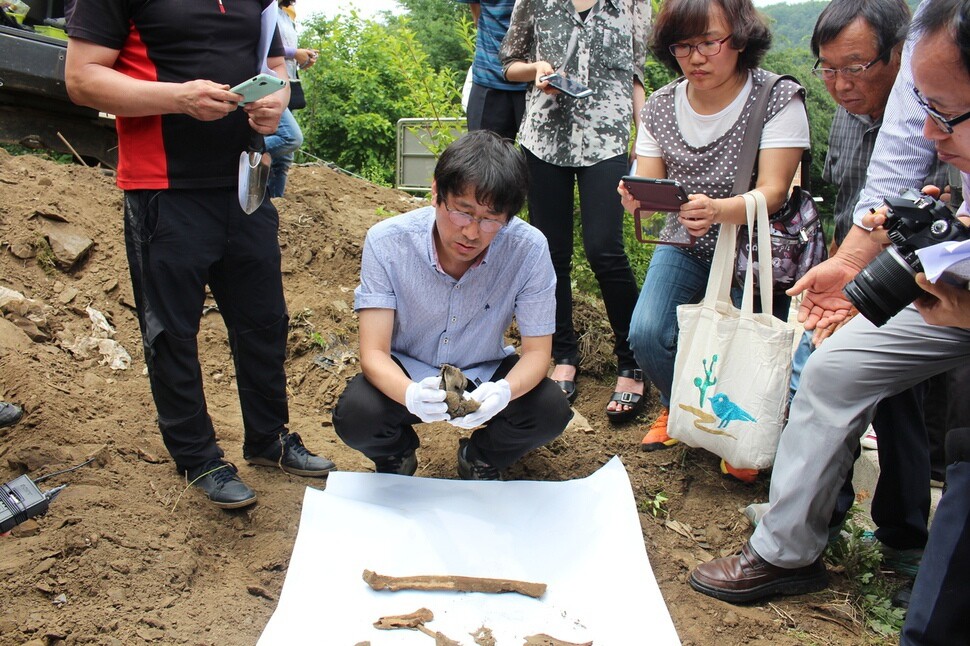hankyoreh
Links to other country sites 다른 나라 사이트 링크
Witnesses of Bodo League massacre come forward after 64 years after slaughter

“Come to the Cheongju Police Station martial arts training center.”
On the afternoon of July 11, 1950 – around two weeks after the outbreak of the Korean War – a telephone call was made to Cheongju Central Elementary School. The caller was looking for 28-year-old schoolteacher Park Jeong-soon. Park hurried packed a few belongings and headed to the center. Many people were already there when she arrived.
“They said they were going to show us Mt. Songni. [. . .]”
Park was skeptical from the beginning, but most of the people were drawn to come to the police station by the offer – around 150 in total. They were members of the Bodo League from the Cheongju area in North Chungcheong Province. Park had gone to work teaching at Cheongju Central Elementary after graduating from Kyungsung Normal School. Her husband had gone missing while engaging in left-wing political activity, leaving behind their two children; Park had joined the Bodo League, a “re-education” program under then president Syngman Rhee for suspected communist sympathizers, in an attempt to shed the “red” label on her family.
After spending a night at Miwon Elementary School, she and the others boarded a truck at the directions of the military and police. It headed toward Boeun County, North Chungcheong Province, where Mt. Songni is located – but less than 30 minutes later, the truck came to a halt. The soldiers and police forced the residents out and herded them into the ravine of Achisil in Agok, a village in Boeun’s Naebuk township. They began to fire indiscriminately; gunshots and screams pierced the air.
The soldier and police instructed young people from the village to bury the bodies, and the incident came to a close. Until recently, no one had spoken a word of it.

It was 64 years later, on June 23, 2014, that citizens finally summoned the courage. Cheongju- and Cheong-won-area members of the Bodo League Surviving Family Members Association gathered in Agok with members of the North Chungcheong History and Culture Alliance and others. They were there to confirm evidence of the civilian massacre recalled by resident eyewitnesses.
“They had all the village residents go into their houses, and then gunfire rang out from the ravine,” resident Shin Deok-ho recalled that day.
“The soldiers and police then said, ‘Bury the commies,’ and the bodies were buried at three locations around Achisil,” added Shin, who passed away in 2017.
Shin and others pointed to locations with their shovels, and the excavation began. Less than 30 minutes later, the remains of around 20 apparent victims were unearthed. They were then covered up again with soil.
“It was a test dig to see if civilian victims were actually buried there,” explained North Chungcheong History and Culture Alliance representative Park Man-soon.
“We later asked the government to conduct an official exhumation, but they refused to even make a move,” Park added.

Five years later, North Chungcheong Province has finally answered. On Mar. 3, it announced that digging would begin on Mar. 8 to uncover the remains of civilians killed at Agok. Once unearthed under the direction of the Center for Historical Truth and Justice, the remains are to be enshrined at the House of Remembrance in Sejong.
“This is late in coming, but it’s a good thing,” said Park Man-soon.
“There are an estimated 87 civilian massacre sites in the North Chungcheong area besides Agok. We will need to conduct additional digging to uncover the truth.”
By Oh Yoon-joo, staff reporter
Please direct comments or questions to [english@hani.co.kr]

Editorial・opinion
![[Guest essay] The real reason Korea’s new right wants to dub Rhee a founding father [Guest essay] The real reason Korea’s new right wants to dub Rhee a founding father](https://flexible.img.hani.co.kr/flexible/normal/500/300/imgdb/original/2024/0423/8317138574257878.jpg) [Guest essay] The real reason Korea’s new right wants to dub Rhee a founding father
[Guest essay] The real reason Korea’s new right wants to dub Rhee a founding father![[Column] ‘Choson’: Is it time we start referring to N. Korea in its own terms? [Column] ‘Choson’: Is it time we start referring to N. Korea in its own terms?](https://flexible.img.hani.co.kr/flexible/normal/500/300/imgdb/original/2024/0423/3617138579390322.jpg) [Column] ‘Choson’: Is it time we start referring to N. Korea in its own terms?
[Column] ‘Choson’: Is it time we start referring to N. Korea in its own terms?- [Editorial] Japan’s rewriting of history with Korea has gone too far
- [Column] The president’s questionable capacity for dialogue
- [Column] Are chaebol firms just pizza pies for families to divvy up as they please?
- [Column] Has Korea, too, crossed the Rubicon on China?
- [Correspondent’s column] In Japan’s alliance with US, echoes of its past alliances with UK
- [Editorial] Does Yoon think the Korean public is wrong?
- [Editorial] As it bolsters its alliance with US, Japan must be accountable for past
- [Guest essay] Amending the Constitution is Yoon’s key to leaving office in public’s good graces
Most viewed articles
- 1[Guest essay] The real reason Korea’s new right wants to dub Rhee a founding father
- 2Terry Anderson, AP reporter who informed world of massacre in Gwangju, dies at 76
- 3[Column] ‘Choson’: Is it time we start referring to N. Korea in its own terms?
- 4Why Korea shouldn’t welcome Japan’s newly beefed up defense cooperation with US
- 5[Column] The clock is ticking for Korea’s first lady
- 6[Editorial] Japan’s rewriting of history with Korea has gone too far
- 7Opposition calls Yoon’s chief of staff appointment a ‘slap in the face’
- 8Video evidence surfaces showing Korean comfort women were massacred by Japanese military
- 9Senior doctors cut hours, prepare to resign as government refuses to scrap medical reform plan
- 10New AI-based translation tools make their way into everyday life in Korea